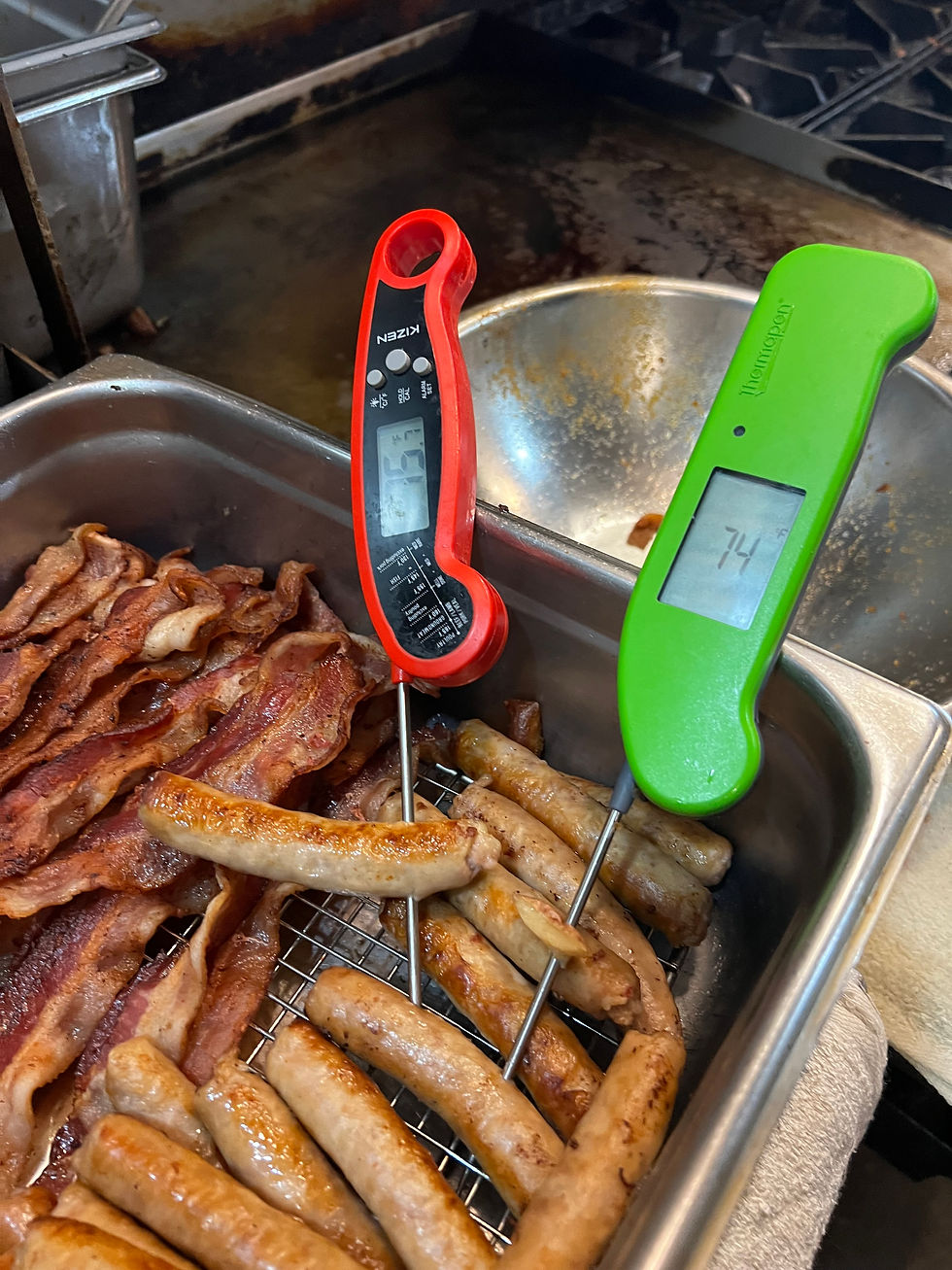Name That Bug!
- mcfoodsafety
- Mar 24, 2023
- 2 min read
Pathogens, or “bugs” such as bacteria, viruses, parasites, and fungi can contaminate our food. Pathogens can make us sick when we eat them or can produce toxins that will make us sick.

I am an anaerobic spore-forming rod
I produce a deadly neurotoxin
The spores are heat-resistant and can survive in foods that are incorrectly or minimally processed
The spore state is a period of no growth, similar to hibernation
There are seven types of me, of which 4 cause illness
My spores and I are widely distributed in nature; forest, soil, and sea
Symptoms begin usually 18 to 36 hours after ingestion of the food containing the toxin
Symptoms include: nausea, vomiting, fatigue, dizziness, headache, skin dryness, dryness of the mouth and throat, constipation, paralysis of muscles, double vision and difficulty in breathing
My toxin causes flaccid paralysis by blocking motor nerve terminals, starting with the eyes and face, to the throat, chest, and extremities.
I cause death if gone untreated
I am usually associated with eating home canned products
I was responsible for an outbreak that was associated with garlic in oil that was not properly refrigerated
I am the most poisonous substance known
Who am I?
I am Clostridium botulinum, also know at C. botulism.
I am a group of bacteria that preserves itself in hard casings called a spore. Spores are found in soil, water, and the environment. Any food that comes in contact with the soil can become contaminated with spores. This includes fish (which ingest mud), vegetables, potatoes, rice, flour, milk, eggs, meat, and poultry. The spores can survive in most environments and are very hard to kill. They can survive the temperature of boiling water at sea level. If the spores are not destroyed and given an environment in which the can grow and flourish they will produce a neurotoxin. C. botulinum is only able to produce the neurotoxin during sporulation, which can only happen in an anaerobic environment. The neurotoxins, when consumed, can cause paralysis and death if gone untreated.
C. botulinum has been implicated in improperly canned goods, fresh garlic in oil, and improperly handled foods left in the temperature danger zone with reduced or little oxygen. Since we know that the spores exist in the intestines of fish we would not want to place the raw fish in a low oxygen environment, such as Reduced Oxygen Packaging (ROP), which could allow it to form neurotoxins. C. botulinum spores are extremely heat resistant, so while cooking at proper temperatures would destroy most foodborne pathogens, it does not destroy C. botulinum.



Comments